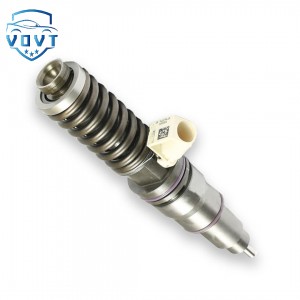New High Quality Diesel Nozzle F00VX20010 for Injection Nozzle Diesel Engine Parts
Products Description
| Reference. Codes | F00VX20010 |
| Application | / |
| MOQ | 12PCS |
| Certification | ISO9001 |
| Place of Origin | China |
| Packaging | Neutral packing |
| Quality Control | 100% tested before shipment |
| Lead time | 7~15 working days |
| Payment | T/T, L/C, Paypal, Western Union, MoneyGram or as your requirement |
How does the fuel injection system of a car engine work together with other systems?
The fuel injection system of a car engine does not work independently, but works in coordination with the intake system, ignition system, electronic control system, and emission control system to ensure efficient and stable operation of the engine. The following are the specific ways in which it works in coordination with each system:
Cooperation with the intake system
Air flow measurement: The air flow meter in the intake system is responsible for measuring the air flow entering the engine and transmitting the signal to the electronic control unit (ECU). The fuel injection system accurately calculates the required fuel injection amount based on this signal to ensure that the fuel and air reach a suitable mixing ratio. For example, when the engine load increases and the intake volume increases, the fuel injection system will increase the injection volume accordingly.
Intake manifold coordination: The intake manifold distributes air to each cylinder, and the pressure changes inside it will also affect fuel injection. The fuel injection system will adjust the injection timing and injection amount based on the pressure signal from the intake manifold pressure sensor to adapt to the intake conditions under different working conditions.
Cooperation with the ignition system
Ignition timing coordination: The working timing of the fuel injection system is closely related to the ignition system. ECU controls the fuel injection timing and ignition timing at the same time according to the engine speed, load and other information. After the fuel is injected, the ignition system needs to generate an electric spark at the right time to ignite the mixture so that the combustion process occurs at the best time to achieve efficient power output of the engine.
Knock control coordination: The knock sensor can detect whether the engine has knock. Once knock is detected, the ECU will adjust the ignition advance angle and the amount of fuel injection. Delaying the ignition time or increasing the amount of fuel injection can reduce the combustion temperature and pressure, avoid the occurrence of knock, and protect the engine.
Collaboration with electronic control system
Sensor information integration: Various sensors in the electronic control system, such as throttle position sensor, water temperature sensor, oxygen sensor, etc., will input the real-time operating parameters of the engine to the ECU. The fuel injection system relies on the processing results of these information by the ECU to dynamically adjust the fuel injection strategy so that the engine can maintain the best fuel supply under different temperature, load and other conditions.
Closed-loop control implementation: The oxygen sensor monitors the oxygen content in the exhaust gas and feeds back the signal to the ECU to let the ECU understand the actual combustion of the mixture. Based on this feedback, the fuel injection system continuously corrects the injection amount so that the mixture concentration is always close to the theoretical air-fuel ratio to improve fuel economy and reduce emissions.
Collaboration with the emission control system
Three-way catalytic converter: The fuel injection system ensures that the mixture burns near the theoretical air-fuel ratio, so that the three-way catalytic converter can effectively purify harmful gases in the exhaust, such as carbon monoxide (CO), hydrocarbons (HC) and nitrogen oxides (NOx). Accurate fuel injection control helps to improve the conversion efficiency of the three-way catalytic converter and reduce pollutant emissions.
Exhaust gas recirculation (EGR) synergy: The EGR system introduces part of the exhaust gas into the intake system to reduce the combustion temperature and reduce the generation of NOx. The fuel injection system will adjust the fuel injection amount and injection timing according to the opening of the EGR valve and the amount of exhaust gas to ensure that the engine can still burn and operate normally after the exhaust gas is introduced.

























